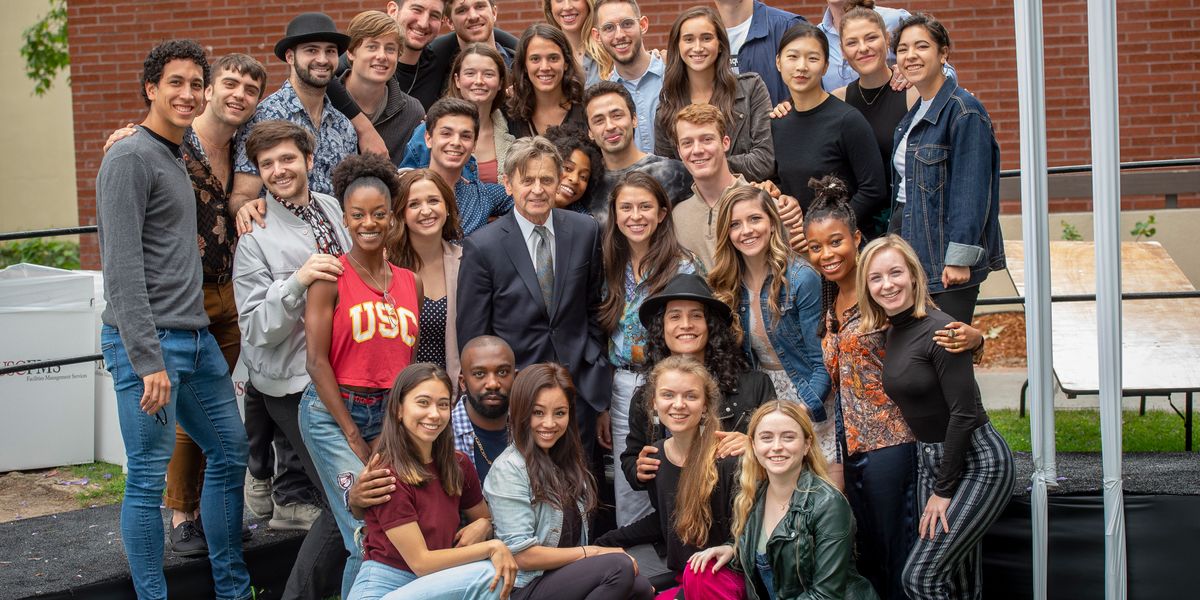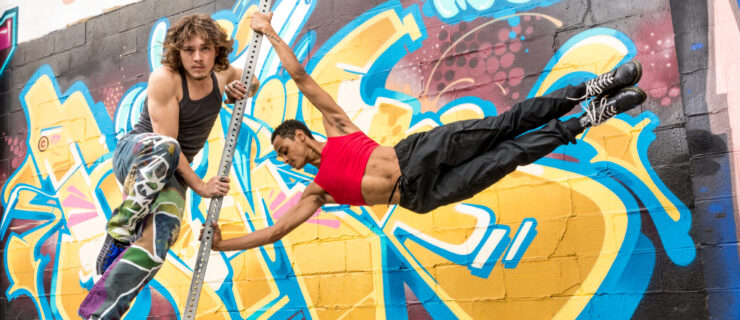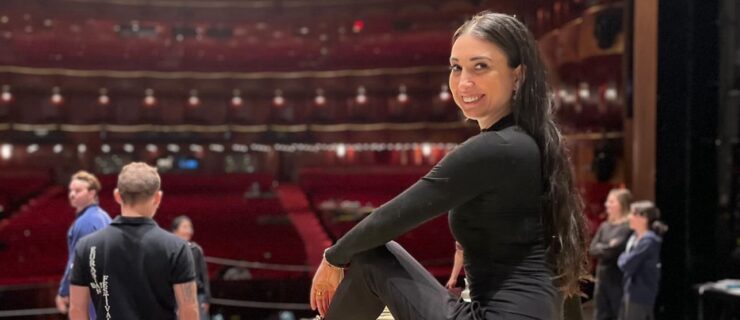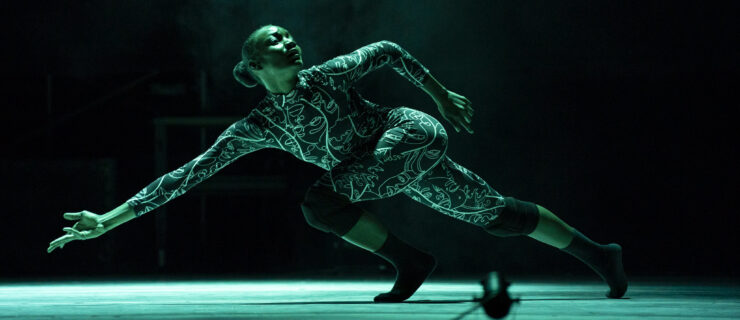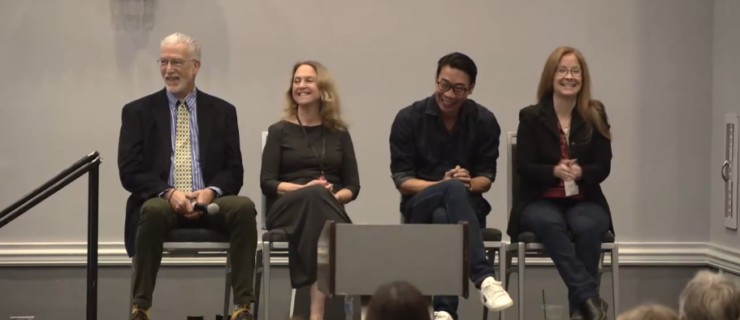Meet the First-Ever Graduating Class of USC Kaufman
Just four years ago, the University of Southern California’s Glorya Kaufman School of Dance welcomed its first class of BFA students. The program—which boasts world-class faculty and a revolutionary approach to training focused on collaboration and hybridity—immediately established itself as one of the country’s most prestigious and most innovative.
Now, the first graduating class is entering the dance field. Here, six of the 33 graduates share what they’re doing post-grad, what made their experience at USC Kaufman so meaningful and how it prepared them for their next steps:
Coco Alvarez-Mena
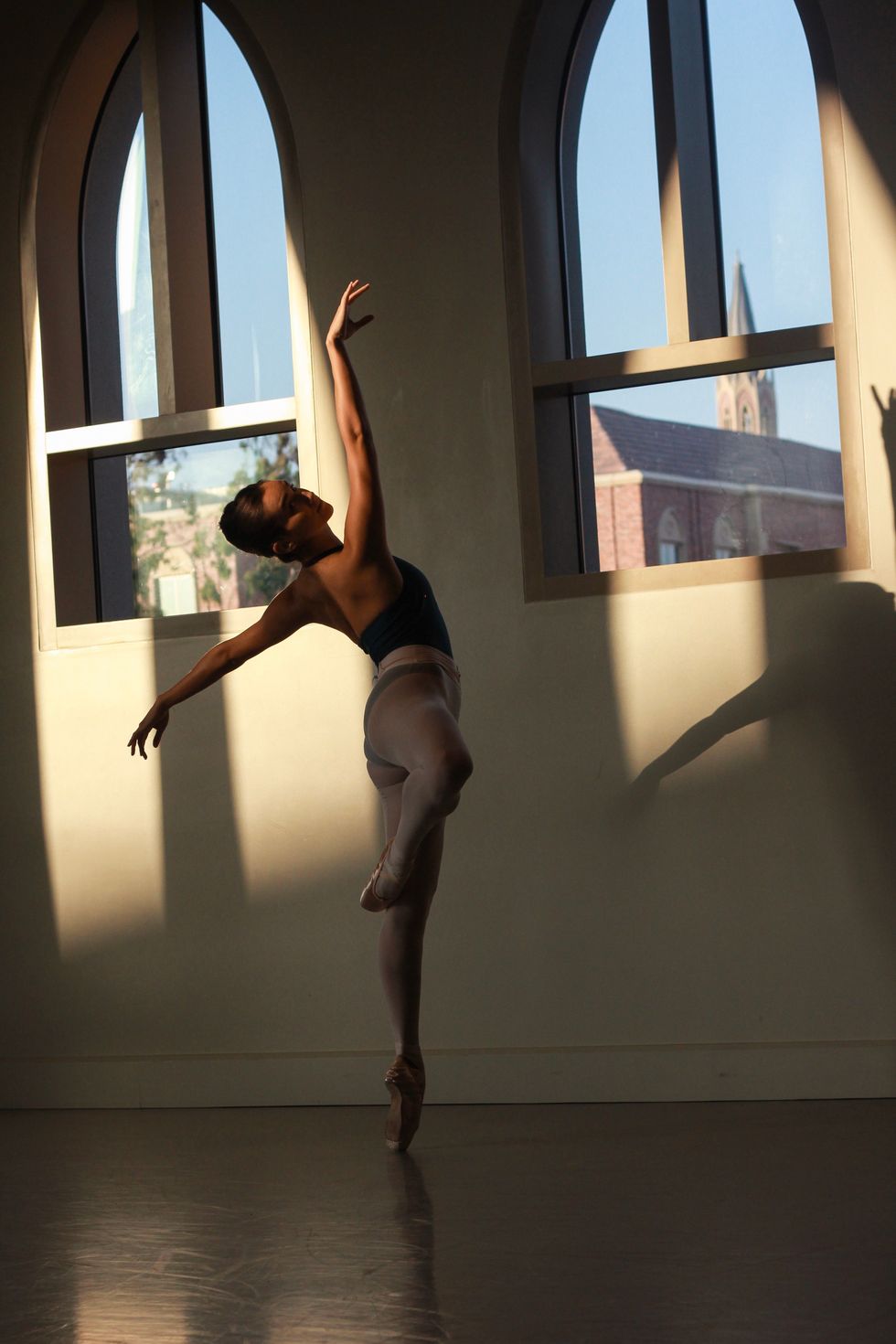
Photo by fellow USC Kaufman student Benjamin Peralta, Courtesy Alvarez-Mena
“The ballet training at USC Kaufman is incredible,” says Coco Alvarez-Mena. “They have such a range of styles, so I got a little bit of everything.” The strong technique and versatility she developed during college paid off: Following graduation, she landed a corps de ballet contract with Oregon Ballet Theatre in Portland. Among her many other aspirations, she hopes to teach Barre Method, bring awareness to mental health issues for dancers and dance on Broadway.
But for Alvarez-Mena, USC Kaufman offered more than just extraordinary dance training. “Being able to go to football games, basketball games or be involved with Greek life—that’s what I wanted my college journey to look like, so it was great to have that available to me at USC Kaufman,” she says. “It’s a conservatory-style curriculum within a large university, and I’ve always loved both dance and academics. I think it can be hard in dance, because often you’re forced to choose. At USC Kaufman I didn’t have to.”
Justin Epstein
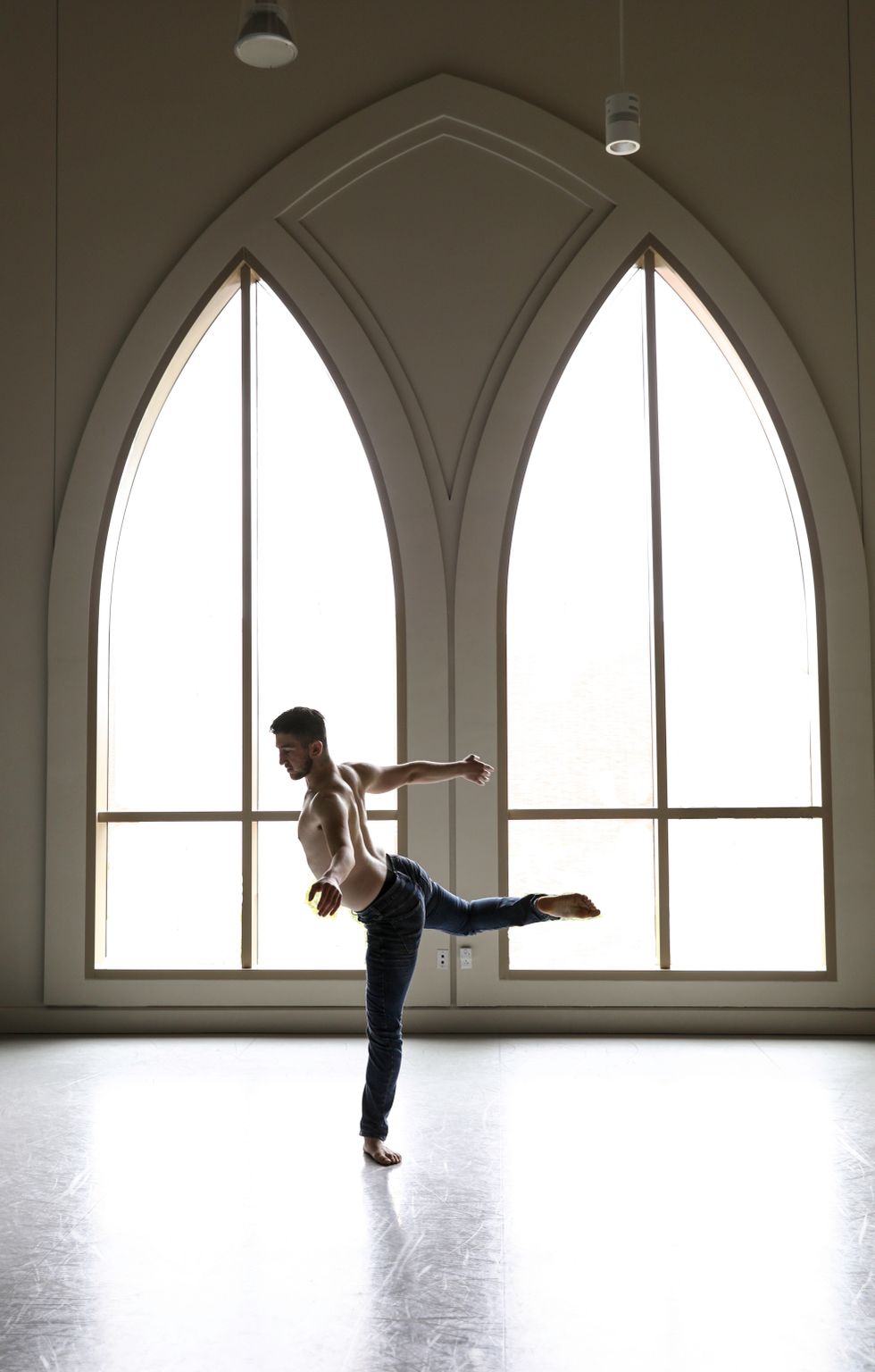
Photo by fellow USC Kaufman grad Mary Mallaney, Courtesy Epstein
“At USC Kaufman, they promoted versatility,” says Justin Epstein. And he should know about what it means to be versatile, having spent his college years training in both dance and music, as well as participating in collaborations between the two departments, such as this year’s production of West Side Story. He even branched outside of the arts: “Being at USC Kaufman where the conservatory-style dance program is merged with the research-based university, I was able to take very high caliber classes in social science, human inquiry and other subjects,” he says. “It made me a more cognizant and socially-aware artist.”
Since graduation, Epstein has continued his creative pursuits in dance and music in the L.A. area. He and fellow USC Kaufman grad Austyn Rich currently manage We Live In Space, an intimate rehearsal and performance venue. Epstein also works as the production coordinator for Laguna Dance Festival’s annual gala and is an audio consultant for the Movers Digest podcast. He hopes to continue choreographing, composing and collaborating and eventually teach in higher ed.
Beau Foley

Cedric Terrell, courtesy Foley
Beau Foley’s USC Kaufman trajectory landed him at the crossroads between arts and business: marketing. During school, he took classes in everything from advertising to consumer behavior to accounting to psychology to graphic design (and dance, of course). “I went into college with a more narrow point of view about what a dance education can lead to,” he says. “Over the four years, I discovered that I have more possibilities than I originally thought. I think I landed on marketing because it felt like a nice marriage between stability and creativity.”
As a digital marketing freelancer for dance nonprofits, he now helps organizations develop their brand and increase their reach. He also works in event venue management and is a passionate content creator.
Satori Folkes-Stone

Rose Eichenbaum, courtesy Folkes-Stone
Immediately following graduation, Satori Folkes-Stone landed her dream job in a Broadway show: Ivo van Hove’s revival of West Side Story, choreographed by Anne Teresa de Keersmaeker and opening this fall (her classmate Madison Vomastek was also cast in the production!). “USC Kaufman quite literally set me up for the job that I’m doing,” she says. “Because the show is very improvisation-based, all the time we spent with Bill Forsythe translated over. I’ve never felt more prepared for an audition.”
USC Kaufman’s impact on Folkes-Stone was personal as well as professional. “I think the school saved me,” she says. “I needed a friend group. I needed people looking out for me. The school has continued to be this strong community-based environment. There is space to talk about what you actually think about something. There is space to pull a professor over and tell them how you’re feeling.”
Celine Kiner
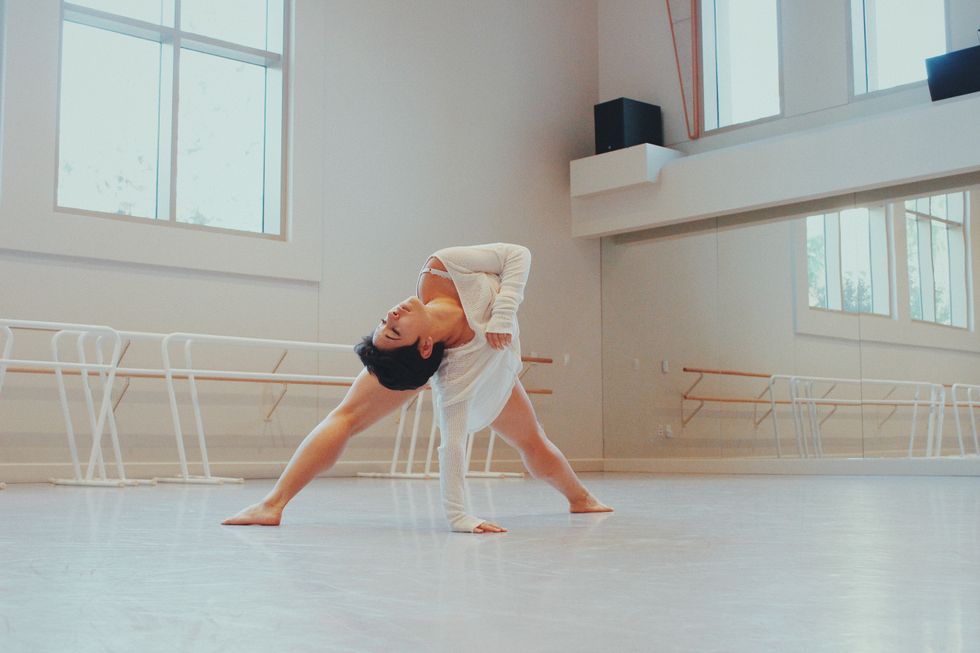
Margaret Leyva, courtesy Kiner
“At USC Kaufman, they emphasized that a dance education doesn’t have to lead to a performance career,” says Celine Kiner. “We talked a lot about the hybrid artist. I’ve always loved writing, but it had been separate from dance for me.” Today, in addition to performing with Raiford Rogers Modern Ballet, Kiner writes for the Los Angeles Dance Chronicle and DIY Dancer, while continuing arts administrative work at USC Kaufman and Laguna Dance Festival. “At USC Kaufman, I started to realize there is a niche occupation where I can do this and get paid for it. It’s a dream job! I feel like USC Kaufman gave me the tools to be articulate enough to do it.”
Moving forward, her training at USC Kaufman will inform both her work as a writer and as a dancer. “I learned to value process over product and so I find a lot more information in the process of making a dance, like what is going on in the choreographer’s head, rather than just what I see on the stage,” she says. “I’m interested in exploring that more in my writing and getting inside choreographers’ processes.”
Austyn Rich
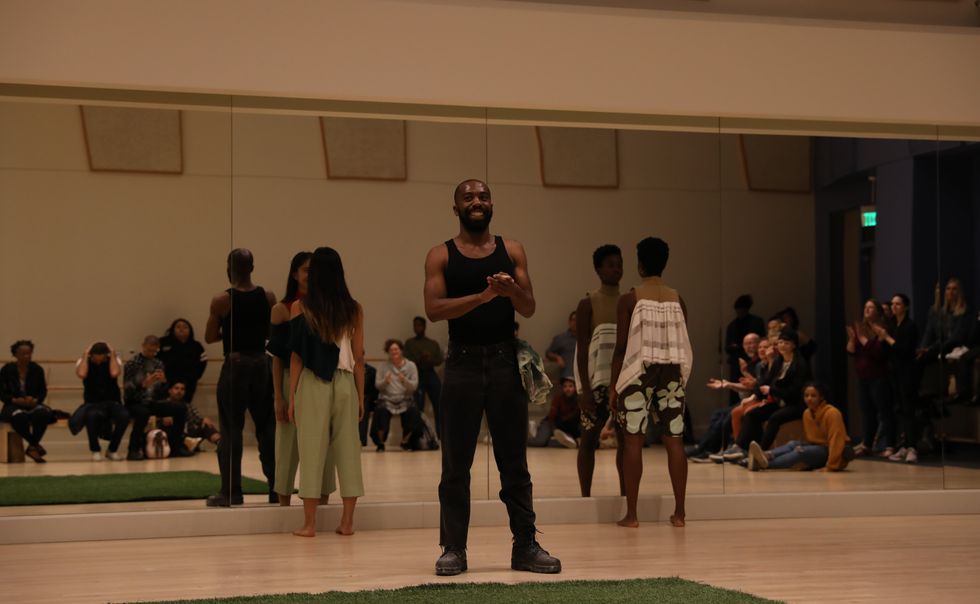
Photo by fellow USC Kaufman grad Mary Mallaney, Courtesy Rich
USC Kaufman helped Austyn Rich become a jack-of-all-trades—and no, he’s not a master-of-none. In addition to dance, Rich studied photography, printmaking, metal sculpture and more. That versatility will come in handy as Rich dives headfirst into the L.A. arts scene: He’s already gearing up to present a new work titled Bloody Spaghetti at REDCAT as well as a show at Highways Performance Space this fall.
“The support that I got from the faculty allowed me to challenge myself and never feel settled in one area,” he says. “I really valued the relationships that we built. I could call them anytime for support and guidance. It helped me build confidence, trust and a fearless attitude.” Rich hopes to strengthen his choreographic voice and to continue doing interdisciplinary work combining technology, fashion, design and more.
